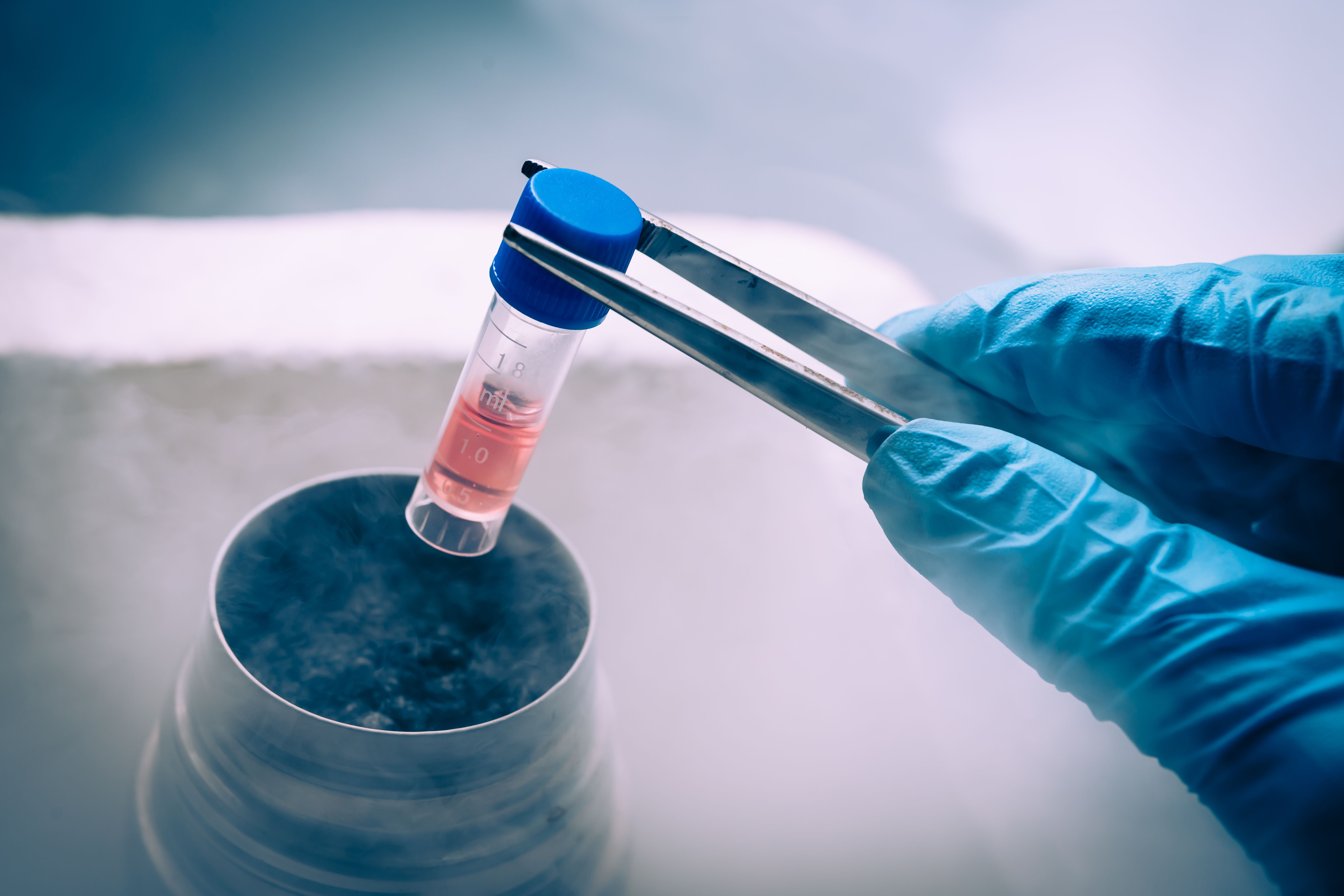Frozen Embryo Transfer Can Be an Effective Option for Having a Baby
A frozen embryo transfer (FET) at our Los Angeles, CA, fertility center is a process in which embryos created during a previous IVF (in vitro fertilization) cycle are frozen, or cryopreserved, through advanced freezing techniques. Once frozen, the embryos will remain safely preserved until the parent(s) are ready to build their family. At that point, the embryo(s) are thawed and transferred into the patient’s, or gestational surrogate’s uterus. Drs. Marc Kalan and Nurit Winkler are esteemed fertility specialists at Los Angeles Reproductive Center and have vast experience in the science and art of frozen embryo transfer.

From natural protocols to traditional preparations, as well as progressive “out of the box” approaches, Drs. Winkler and Kalan will determine the appropriate FET protocol for you. At the Los Angeles Reproductive Center, the combination of advanced laboratory technology and refined expertise means the success rate of a frozen embryo transfer is equal if not superior to the success rate of a fresh embryo transfer. In many circumstances, pregnancy rates are as high as 70 to 80 percent per embryo transfer.
What Is Frozen Embryo Transfer?
Patients interested in frozen embryo transfer will first undergo a fresh IVF cycle to create embryos. During this assisted reproductive procedure, Dr. Kalan or Winkler will harvest eggs through a natural or medication-assisted ovulation cycle and fertilize the eggs with the partner’s, or chosen donor’s, sperm. After about five days of growth in the laboratory, all viable embryos are frozen (cryopreserved).
With our advanced, flash-freezing technology, freezing the embryos generally does not have a negative impact on their quality.
During a frozen embryo transfer, Dr. Kalan or Winkler will carefully thaw the embryo(s) and precisely transfer them into the uterus. Due to a more favorable uterine environment, frozen embryo transfer success rates are believed to be higher than embryos transferred immediately after a fresh IVF cycle, (known as a “fresh transfer”).
Any patient who has embryos that are capable of growing in the laboratory is a candidate for cryopreservation and subsequent frozen embryo transfer. At Los Angeles Reproductive Center, we provide embryo cryopreservation and frozen embryo transfer for patients interested in expanding their family in the future, as well as those who are ready to grow their family right now.
Steps Involved in FET
Drs. Kalan and Winkler are dedicated to their patients and design treatment to each patient’s specific needs and desires. The overall procedure of IVF and frozen embryo transfer generally takes about six to eight weeks. A frozen embryo transfer by itself requires about three weeks.
Additional Details on Each Step
- Pre-Screening
- During the initial consultation, Dr. Kalan or Dr. Winkler will meet with you to discuss your medical, surgical, familial, and fertility history. In addition, the doctor will perform a pelvic ultrasound, and routine blood work to check for infectious diseases, genetic disorders, ovarian strength, and other factors unique to each individual patient. In addition, the doctors will evaluate the sperm quality and evaluate the internal contours of the uterus.
- Oral Medication
- If Dr. Kalan or Winkler deems it necessary, they will prescribe three to four weeks of birth control to regulate your hormone cycle. Although birth control, estrogen injections, and other medications are endorsed by many specialists in the fertility industry, Drs. Kalan and Winkler recommend using medication only at the patient’s request or when absolutely necessary. In most cases, they prefer to respect the patient’s natural cycle.
- Injections
- Beginning on the second or third day of the menstrual cycle, Drs. Winkler and Kalan will evaluate the uterus and ovaries and, if appropriate, begin stimulation medication (injections). Over the next 10-12 days, the ovaries will be monitored with ultrasound on a regular basis. When the eggs are determined to be ready, the egg retrieval procedure will occur. Once retrieved, the eggs are fertilized and grown in the IVF laboratory for five to six days, then frozen.
- FET Preparation
- About two weeks after the egg retrieval procedure, most patients will begin their natural menstrual period. On the second or third day of that cycle, Drs. Winkler or Kalan will perform an ultrasound and begin estrogen pills to prepare the endometrial lining. A week later, the patient returns for an ultrasound to check the endometrial lining and then again they return for the same purpose about five days later. At this point, progesterone is started through either injections or vaginal suppositories. The embryo transfer is then scheduled five days later.
- Natural FET
- For some patients, Drs. Winkler or Kalan will perform a natural FET. This process involves very little or no medication and is based on the patient’s organic ovulation cycle. Natural FET can be a better approach for some specific patients. In fact, there are patients who have failed multiple standard IVF cycles, only to conceive with a natural FET. The process requires great expertise and patience to execute properly. Fortunately, the doctors at Los Angeles Reproductive Center have that expertise and patience.
- Embryo Transfer
- Five days after starting progesterone, your chosen embryo(s) will be carefully thawed in the IVF laboratory. Using ultrasound guidance, Drs. Winkler or Kalan will precisely transfer your embryo into your (or your surrogate’s) uterus where it will be able to attach and grow into a healthy baby.
Pregnancy Success Rates
Due to our advanced flash-freezing (vitrification) technologies, freezing the embryos generally does not have a negative impact on their success rate. In fact, chances for pregnancy are higher for frozen embryos than embryos transferred during a fresh IVF cycle.
Factors that can affect the success rate of a frozen embryo transfer include the quality and genetic content of the embryos, uterine factors such as fibroids or a uterine septum, as well as immunologic, environmental, and infectious factors. Drs. Kalan and Winkler will evaluate for all these factors before performing the frozen embryo transfer.
Benefits of Frozen Embryo Transfer
Compared to IVF and fresh embryo transfer, undergoing a frozen embryo transfer generally:
- Provides a higher success rate
- Provides the opportunity for PGS
- Provides a more natural uterine environment for the developing pregnancy
- Is less stressful
- Is more easily scheduled
Learn More
FET can be an excellent option for starting or adding to your family. If you are interested in learning more about the benefits of frozen embryo transfer, contact our practice today to schedule your consultation with one of our qualified specialists.




